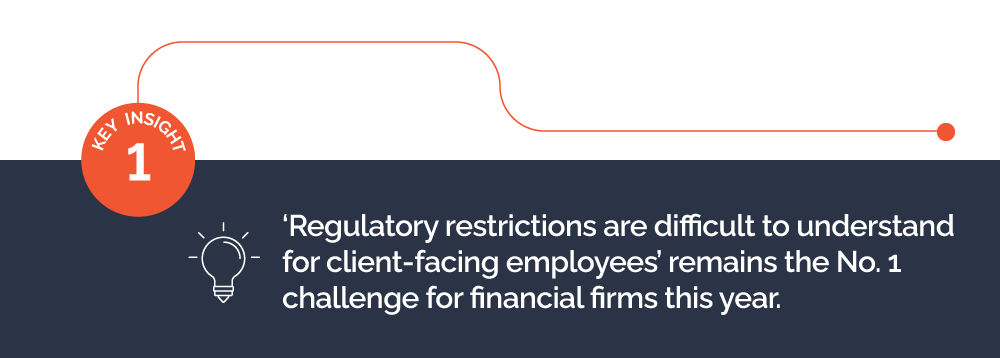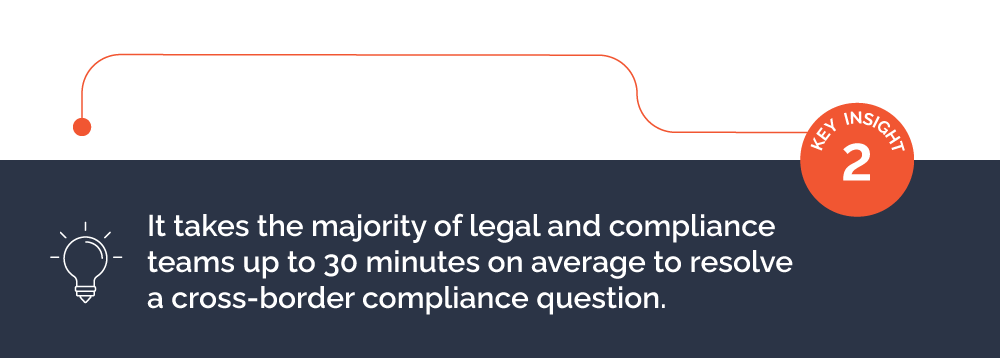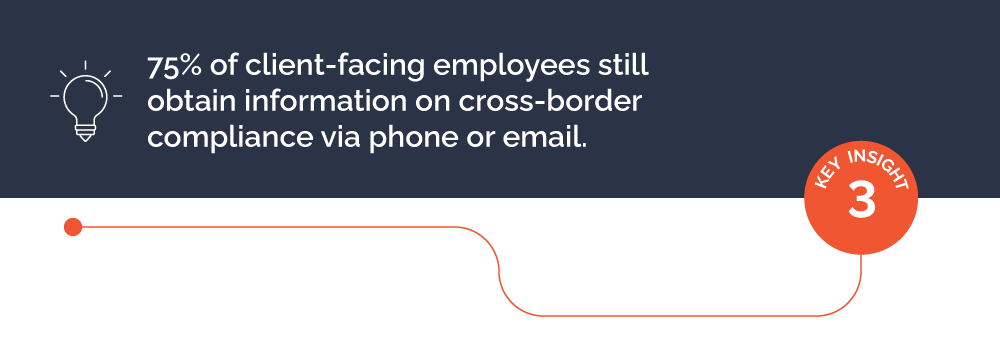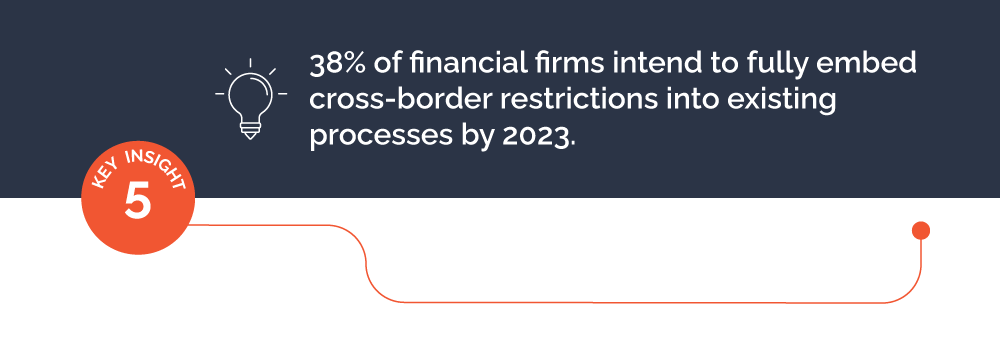
For the second year in a row, Apiax has carried out a survey to analyse how financial institutions ensure compliance when serving customers around the world. The aim of the Cross-Border Compliance Survey is to understand the main challenges that financial firms face when conducting cross-border business, as well as the trends and priorities in the digitalisation of cross-border compliance.
The survey is truly global in scope and captures insights from over 70 respondents working in wealth management and asset management.
In this interview Thomas Imhof, Regulatory Product Owner at Apiax, shares what he considers to be the most insightful findings from this year’s survey.
Thomas, according to the survey, what is the biggest challenge for financial firms when serving clients internationally?
90% of survey respondents say that they serve clients on a cross-border basis. Having a strong client base distributed across the globe is definitely a great growth opportunity for financial firms. However, when companies serve clients in many different countries, they also need to cope with a growing list of ever-changing local regulations.
The biggest pain point in serving foreign clients continues to be the difficulty of communicating compliance requirements to customer-facing employees. This problem is shared by 45% of survey participants. Interestingly, some business activities pose a greater challenge than others. Survey respondents see offering investment advisory solutions and offering securities or bank accounts as some of the most challenging areas in terms of cross-border compliance clarifications.

Is there a finding that is particularly noteworthy for you?
When asked how much time they spend on resolving individual cross-border questions, the most common response from respondents in a legal and compliance function is ‘up to 30 minutes’. Almost a third say that they need only around 5 minutes, 14% of respondents take up to an hour, and 5% require even longer.
Looking at the time spent on compliance questions, and the number of requests they get per month, our calculations show that the average legal and compliance team member spends at least 10 hours (or more than 1 full working day) per month resolving cross-border compliance issues.
That is something that has really surprised me – it is much more than I expected.

On a similar note, the front office is mainly (75%) still clarifying cross-border issues with their compliance team via phone or email, which takes up to 30 minutes of their time. We learned that 25% of customer-facing respondents spend as much as an hour seeking clarification and advice, and another 25% say they spend even more time. Just to be clear: all of these numbers are per individual request. So it really adds up over time.

Looking at the survey findings, what are companies doing to bring down the time spent on resolving compliance issues?
Our survey clearly shows that the availability and accessibility of compliance knowledge are becoming increasingly important to compliance teams. This also matches our experience with our clients. Legal and compliance departments are very receptive to new digital solutions and are exploring new innovative ways to deliver compliance knowledge to their frontline staff.
We also see that financial firms are in the process of changing the way they source regulatory requirements. Although traditional paper-based manuals are still the most common way to acquire regulatory knowledge, this year’s cross-border survey results show that 42% of respondents already use a digital compliance solution to obtain cross-border compliance information. This is a huge increase from only 9% last year and definitely a sign that the industry is digitalising their compliance departments.

What do companies see as priorities in 2022?
Integrating cross-border information as digital rules into existing processes seems to be a clear priority for financial institutions at the moment. 38% of survey respondents say that their employers plan to fully embed cross-border restrictions into existing processes by 2023.

Using such a solution not only significantly reduces the time required to resolve cross-border compliance issues but also improves the accessibility of compliance knowledge within the organisations. This has proven to be the case for many financial firms we work with, who already have an embedded compliance solution in place.
We are convinced that digital compliance tools will continue to enable financial institutions to easily navigate through multiple jurisdictions and receive clear guidance on cross-border compliance questions.
Thank you Thomas for this conversation!

